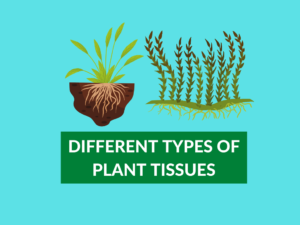Biomagnification Vs Bioaccumulation: What’s the Difference?
Biomagnification and bioaccumulation are two interconnected concepts in environmental science that describe the accumulation of toxic substances in living organisms. While the terms are often used interchangeably, they actually refer to different processes. In this article, we will explore the differences between biomagnification and bioaccumulation, their examples, uses, and provide a concise conclusion summarizing the disparities.
What is Biomagnification?
Biomagnification, also known as bioamplification, is the process through which certain substances, such as heavy metals or persistent organic pollutants, become increasingly concentrated as they move up the food chain. In other words, the concentration of these substances magnifies as they are transferred from one trophic level to the next.
Examples of Biomagnification:
- The biomagnification of mercury in aquatic ecosystems is well-documented. Small organisms, like plankton, absorb low levels of mercury from water. When larger predatory fish consume these organisms, they accumulate a higher concentration of mercury. If humans consume these contaminated fish, they can experience the harmful effects of mercury poisoning.
- Another example is the biomagnification of DDT (a pesticide) in birds. DDT enters the food web when insects consume plants treated with the pesticide. Birds that feed on these insects accumulate higher levels of DDT in their bodies, causing thinning of their eggshells and affecting reproduction.
Uses of Biomagnification:
- Biomagnification studies help understand the ecological impact of pollutants on different organisms and ecosystems.
- They help identify potential health risks associated with the consumption of contaminated food.
- Biomagnification research contributes to the development of environmental policies and regulations.
What is Bioaccumulation?
Bioaccumulation refers to the gradual accumulation and buildup of substances, such as pollutants or chemicals, in an organism’s tissues over time. Unlike biomagnification, which focuses on the transfer of substances through different trophic levels, bioaccumulation emphasizes the uptake and retention of these substances by an individual organism.
Examples of Bioaccumulation:
- A common example of bioaccumulation is the accumulation of heavy metals, like lead or cadmium, in fish. These metals are absorbed from water and food sources and gradually accumulate in fish tissues over their lifespan. This process increases their vulnerability to health issues and makes them potential sources of toxicity for higher-level predators or humans who consume them.
- Another instance is the bioaccumulation of BPA (bisphenol A) in plastics. When plastics containing BPA are exposed to heat or repetitive use, the chemical can leach into food or drinks, leading to its accumulation in the human body. The long-term exposure to BPA has been linked to various health problems.
Uses of Bioaccumulation:
- Bioaccumulation studies help assess the potential risks and impacts of specific substances on individual organisms.
- Understanding bioaccumulation aids in developing strategies to mitigate the accumulation of harmful substances in organisms.
- These studies inform the formulation of guidelines and regulations for the safe use and disposal of potentially harmful substances.
Differences between Biomagnification and Bioaccumulation:
| Difference Area | Biomagnification | Bioaccumulation |
|---|---|---|
| Definition | Concentration amplification of substances as they move up the food chain | Gradual accumulation of substances in an organism’s tissues over time |
| Focus | Transfer of substances between trophic levels | Uptake and retention of substances by an individual organism |
| Scale | Occurs at the ecosystem level | Occurs at the individual organism level |
| Influence | Impacted by an organism’s feeding habits and trophic level position | Impacted by an organism’s exposure and accumulation capacity |
| Transfer Mechanism | Transferred through consumption | Uptake through respiration, ingestion, or dermal contact |
| Main Concern | Elevated concentrations in higher-level predators and the associated ecological impact | Accumulation of toxins in an organism’s tissues, potential health risks |
| Trophic Levels | The concept of trophic levels is central to biomagnification | Emphasizes individual organism’s capacity to accumulate substances |
| Examples | Mercury biomagnification in aquatic ecosystems | Bioaccumulation of heavy metals in fish |
| Research Application | Understand ecological impacts and develop regulations | Assess risks, develop mitigation strategies, and inform guidelines |
| Focus on | Ecosystem dynamics and interconnection | Individual organisms and their health implications |
Conclusion:
In conclusion, biomagnification and bioaccumulation are both essential concepts in the field of environmental science, but they represent distinct processes. Biomagnification describes the amplification of substances as they move up the food chain, focusing on the transfer between trophic levels. On the other hand, bioaccumulation refers to the gradual accumulation of substances in an organism’s tissues over time, focusing on individual organisms. Understanding these differences allows us to better understand the ecological impacts and potential health risks associated with the accumulation of toxic substances in our ecosystems.
People Also Ask:
Q1: What are the main factors that influence biomagnification?
A1: Biomagnification is influenced by an organism’s feeding habits, its position in the food chain, and the persistence and toxicity of the substances being transferred.
Q2: How does bioaccumulation affect human health?
A2: Bioaccumulation of certain substances in the human body can lead to various health issues, such as reproductive problems, organ damage, and increased risk of cancer.
Q3: Can biomagnification and bioaccumulation be reversed?
A3: While it may be challenging to reverse the accumulation of substances, measures like reducing pollution sources and implementing proper waste management can help mitigate biomagnification and minimize the risks of bioaccumulation.
Q4: Are biomagnification and bioaccumulation only environmental concerns?
A4: While both processes are primarily studied in an environmental context, their implications for human health and food safety make them important considerations for public health as well.
Q5: What can individuals do to reduce the impacts of biomagnification and bioaccumulation?
A5: Individuals can contribute by reducing their use of toxic substances, properly disposing of hazardous waste, supporting sustainable agriculture, and promoting policies that prioritize environmental protection.


